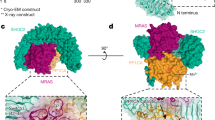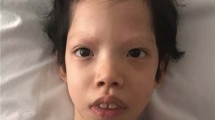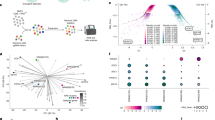Abstract
Noonan syndrome is an autosomal dominant disease characterized by dysmorphic features, webbed neck, cardiac anomalies, short stature and cryptorchidism. It shows phenotypic overlap with Costello syndrome and cardio-facio-cutaneous (CFC) syndrome. Noonan syndrome and related disorders are caused by germline mutations in genes encoding molecules in the RAS/MAPK pathway. Recently, a gain-of-function mutation in SHOC2, p.S2G, has been identified as causative for a type of Noonan-like syndrome characterized by the presence of loose anagen hair. In order to understand the contribution of SHOC2 mutations to the clinical manifestations of Noonan syndrome and related disorders, we analyzed SHOC2 in 92 patients with Noonan syndrome and related disorders who did not exhibit PTPN11, KRAS, HRAS, BRAF, MAP2K1/2, SOS1 or RAF1 mutations. We found the previously identified p.S2G mutation in eight of our patients. We developed a rapid detection system to identify the p.S2G mutation using melting curve analysis, which will be a useful tool to screen for the apparently common mutation. All the patients with the p.S2G mutation showed short stature, sparse hair and atopic skin. Six of the mutation-positive patients showed severe mental retardation and easily pluckable hair, and one showed leukocytosis. No SHOC2 mutations were identified in leukemia cells from 82 leukemia patients. These results suggest that clinical manifestations in SHOC2 mutation-positive patients partially overlap with those in patients with typical Noonan or CFC syndrome and show that easily pluckable/loose anagen hair is distinctive in SHOC2 mutation-positive patients.
Similar content being viewed by others
Log in or create a free account to read this content
Gain free access to this article, as well as selected content from this journal and more on nature.com
or
Accession codes
References
Allanson, J. E., Hall, J. G., Hughes, H. E., Preus, M. & Witt, R. D. Noonan syndrome: the changing phenotype. Am. J. Med. Genet. 21, 507–514 (1985).
van der Burgt, I. Noonan syndrome. Orphanet. J. Rare Dis. 2, 4 (2007).
Hennekam, R. C. Costello syndrome: an overview. Am. J. Med. Genet. C Semin. Med. Genet. 117, 42–48 (2003).
Reynolds, J. F., Neri, G., Herrmann, J. P., Blumberg, B., Coldwell, J. G., Miles, P. V. et al. New multiple congenital anomalies/mental retardation syndrome with cardio-facio-cutaneous involvement--the CFC syndrome. Am. J. Med. Genet. 25, 413–427 (1986).
Aoki, Y., Niihori, T., Narumi, Y., Kure, S. & Matsubara, Y. The RAS/MAPK syndromes: novel roles of the RAS pathway in human genetic disorders. Hum. Mutat. 29, 992–1006 (2008).
Bentires-Alj, M., Kontaridis, M. I. & Neel, B. G. Stops along the RAS pathway in human genetic disease. Nat. Med. 12, 283–285 (2006).
Pandit, B., Sarkozy, A., Pennacchio, L. A., Carta, C., Oishi, K., Martinelli, S. et al. Gain-of-function RAF1 mutations cause Noonan and LEOPARD syndromes with hypertrophic cardiomyopathy. Nat. Genet. 39, 1007–1012 (2007).
Razzaque, M. A., Nishizawa, T., Komoike, Y., Yagi, H., Furutani, M., Amo, R. et al. Germline gain-of-function mutations in RAF1 cause Noonan syndrome. Nat. Genet. 39, 1013–1017 (2007).
Roberts, A. E., Araki, T., Swanson, K. D., Montgomery, K. T., Schiripo, T. A., Joshi, V. A. et al. Germline gain-of-function mutations in SOS1 cause Noonan syndrome. Nat. Genet. 39, 70–74 (2007).
Schubbert, S., Zenker, M., Rowe, S. L., Boll, S., Klein, C., Bollag, G. et al. Germline KRAS mutations cause Noonan syndrome. Nat. Genet. 38, 331–336 (2006).
Tartaglia, M., Mehler, E. L., Goldberg, R., Zampino, G., Brunner, H. G., Kremer, H. et al. Mutations in PTPN11, encoding the protein tyrosine phosphatase SHP-2, cause Noonan syndrome. Nat. Genet. 29, 465–468 (2001).
Tartaglia, M., Pennacchio, L. A., Zhao, C., Yadav, K. K., Fodale, V., Sarkozy, A. et al. Gain-of-function SOS1 mutations cause a distinctive form of Noonan syndrome. Nat. Genet. 39, 75–79 (2007).
Aoki, Y., Niihori, T., Kawame, H., Kurosawa, K., Ohashi, H., Tanaka, Y. et al. Germline mutations in HRAS proto-oncogene cause Costello syndrome. Nat. Genet. 37, 1038–1040 (2005).
Niihori, T., Aoki, Y., Narumi, Y., Neri, G., Cave, H., Verloes, A. et al. Germline KRAS and BRAF mutations in cardio-facio-cutaneous syndrome. Nat. Genet. 38, 294–296 (2006).
Rodriguez-Viciana, P., Tetsu, O., Tidyman, W. E., Estep, A. L., Conger, B. A., Cruz, M. S. et al. Germline mutations in genes within the MAPK pathway cause cardio-facio-cutaneous syndrome. Science. 311, 1287–1290 (2006).
Selfors, L. M., Schutzman, J. L., Borland, C. Z. & Stern, M. J. soc-2 encodes a leucine-rich repeat protein implicated in fibroblast growth factor receptor signaling. Proc. Natl Acad. Sci. USA 95, 6903–6908 (1998).
Rodriguez-Viciana, P., Oses-Prieto, J., Burlingame, A., Fried, M. & McCormick, F. A phosphatase holoenzyme comprised of Shoc2/Sur8 and the catalytic subunit of PP1 functions as an M-Ras effector to modulate Raf activity. Mol. Cell. 22, 217–230 (2006).
Cordeddu, V., Di Schiavi, E., Pennacchio, L. A., Ma’ayan, A., Sarkozy, A., Fodale, V. et al. Mutation of SHOC2 promotes aberrant protein N-myristoylation and causes Noonan-like syndrome with loose anagen hair. Nat. Genet. 41, 1022–1026 (2009).
Makita, Y., Narumi, Y., Yoshida, M., Niihori, T., Kure, S., Fujieda, K. et al. Leukemia in cardio-facio-cutaneous (CFC) syndrome: a patient with a germline mutation in BRAF proto-oncogene. J. Pediatr. Hematol. Oncol. 29, 287–290 (2007).
Ohtake, A., Aoki, Y., Saito, Y., Niihori, T., Shibuya, A., Kure, S. et al. Non-Hodgkin lymphoma in a patient with cardio-facio-cutaneous syndrome. J. Pediatr. Hematol. Oncol. (e-pub ahead of print 2 June 2010).
Armour, C. M. & Allanson, J. E. Further delineation of cardio-facio-cutaneous syndrome: clinical features of 38 individuals with proven mutations. J. Med. Genet. 45, 249–254 (2008).
Narumi, Y., Aoki, Y., Niihori, T., Neri, G., Cave, H., Verloes, A. et al. Molecular and clinical characterization of cardio-facio-cutaneous (CFC) syndrome: overlapping clinical manifestations with Costello syndrome. Am. J. Med. Genet. A. 143A, 799–807 (2007).
Kobayashi, T., Aoki, Y., Niihori, T., Cave, H., Verloes, A., Okamoto, N. et al. Molecular and clinical analysis of RAF1 in Noonan syndrome and related disorders: dephosphorylation of serine 259 as the essential mechanism for mutant activation. Hum. Mutat. 31, 284–294 (2010).
Tosti, A. & Piraccini, B. M. Loose anagen hair syndrome and loose anagen hair. Arch. Dermatol. 138, 521–522 (2002).
Mazzanti, L., Cacciari, E., Cicognani, A., Bergamaschi, R., Scarano, E. & Forabosco, A. Noonan-like syndrome with loose anagen hair: a new syndrome? Am. J. Med. Genet. A. 118A, 279–286 (2003).
Tosti, A., Misciali, C., Borrello, P., Fanti, P. A., Bardazzi, F. & Patrizi, A. Loose anagen hair in a child with Noonan's syndrome. Dermatologica. 182, 247–249 (1991).
Flotho, C., Batz, C., Hasle, H., Bergstrasser, E., van den Heuvel-Eibrink, M. M., Zecca, M. et al. Mutational analysis of SHOC2, a novel gene for Noonan-like syndrome, in JMML. Blood. 115, 913 (2010).
Acknowledgements
We thank the patients and families who participated in this study as well as the doctors who referred the patients. This work was supported by Grants-in-Aids from the Ministry of Education, Culture, Sports, Science and Technology of Japan, Japan Society for the Promotion of Science and The Ministry of Health Labour and Welfare to YM and YA.
Author information
Authors and Affiliations
Corresponding author
Additional information
Supplementary Information accompanies the paper on Journal of Human Genetics website
Supplementary information
Rights and permissions
About this article
Cite this article
Komatsuzaki, S., Aoki, Y., Niihori, T. et al. Mutation analysis of the SHOC2 gene in Noonan-like syndrome and in hematologic malignancies. J Hum Genet 55, 801–809 (2010). https://doi.org/10.1038/jhg.2010.116
Received:
Accepted:
Published:
Issue date:
DOI: https://doi.org/10.1038/jhg.2010.116
Keywords
This article is cited by
-
Recent advances in RASopathies
Journal of Human Genetics (2016)
-
Sur8 mediates tumorigenesis and metastasis in colorectal cancer
Experimental & Molecular Medicine (2016)
-
Ras/MAPK syndromes and childhood hemato-oncological diseases
International Journal of Hematology (2013)



